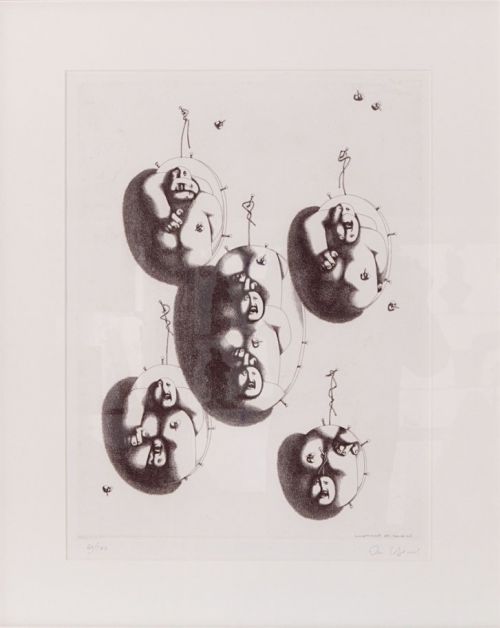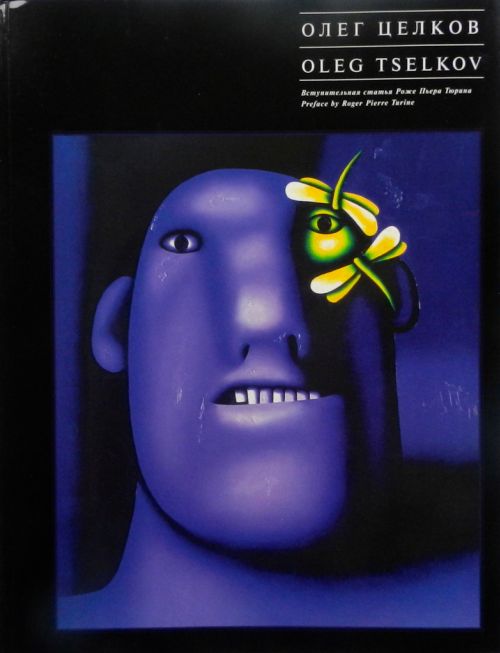About the artist:
Soviet painter and sculptor, one of the leading representative of the "Nonconformism" art movement.
From 1949, Tselkov attended Moscow Middle Art School, then successfully graduating in 1953.
After his expulsions for ideological reasons from the Minsk Institute of Art and Theater in 1954 and the Repin
Institute of Art, Sculpture and Architecture in 1955, Tselkov joined the Leningrad Theater Institute, where his
mentor was N. Akimov, the future artistic director of the Theatre of the Revolution.
In 1958, he graduated with a diploma in stage artistry and technology, but became engrossed by painting when
he moved to Moscow the following year.
Artist's first exhibition was held privately in the Moscow apartment of the abstract painter Vladimir Slepyan in
1956.
In 1977, Tselkov and his wife left the USSR and established themselves in France.
His later work showed his figures in enhanced light, enveloped by nebulous, hazy, hues, painted on canvases the
size of wall panels. In 2004 these were much in evidence at solo shows held in his honour at the Russian Museum
in St. Petersburg, and the State Tretyakov Gallery in Moscow.
Tselkov’s style is distinctive and original, his paintings recognizable at first glance.
"...In 1960, I did my first significant work, painted my first-for the first time, I did something on my own – picture
with two faces, the portrait. With this work, my, so to say, development as an artist starts. Accidentally, for the
first time, I was the first one who did it – pulled down “a face from a face”, in the image and likeness “and so the
face”. I was astonishing. As if it were a portrait, yet not a portrait of a certain person, but rather a universal one, a
portrait of all in one face, one depiction – and it was terribly familiar. I did not have a task “to pull down the
masks”, and what I saw, was not ‘bad”, or “good”, it was more than that. It was more familiar, more real. And this
face, or rather these two faces there were imprinted millions of years than mankind had lived in the past. And
there also were as many years – in an impenetrable future."
Creativity by Oleg Tselkov did not leave indifferent not only experts but also many outstanding writers and artists.
Joseph Brodsky (famous Russian and American poet and essayist) once said: “In my view, Oleg Tselkov is the
most remarkable Russian artist of the post-war period.”
In 1986 another famous Russian artist Mikhail Chemiakin sketched a small verbal portrait of Oleg Tselkov,
resorting to the most energetic formulations: "Tselkov is the creator of surprising cocktail of the XXI century. This
is explosive mixture of light and shade by Rembrandt and lush flesh by Rubens, multiplied by the Russian
madness and power of barbaric spirit."
Oleg Tselkov’s work can be found in many important institutions and galleries, and in many prestigious
collections. These include the State Pushkin Museum of Fine Arts (Moscow), State Tretyakov Gallery (Moscow),
State Russian Museum (St. Petersburg), Moscow Museum of Contemporary Art (Moscow), Stedelijk Museum
(Amsterdam, the Netherlands), Bar-Gera Collection (Germany-Israel), Jean-Jacques Geron collection (Paris,
France),Yokohama Art Museum (Yokohama, Japan), and the Norton and Nancy Dodge Collection, Rutgers
University (New Brunswick, New Jersey, USA).





